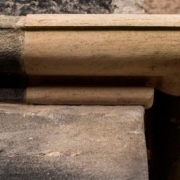A Look At Edinburgh’s Oldest Buildings
Edinburgh, our captivating capital of Scotland, is world renowned for its rich history and stunning architecture. Among the many treasures that adorn its streets, the city proudly holds the distinction of being home to some of Scotland’s oldest stone buildings. Let’s delve into the story behind these remarkable structures and their enduring legacy.
Nearly a thousand years ago, Edinburgh underwent a significant architectural shift as people began constructing buildings using stone instead of wood. This change marked a pivotal moment in the city’s history, as stone buildings offered greater durability and longevity. One of the earliest examples of this transition is Edinburgh Castle, standing proudly atop Castle Rock. While the exact date of its construction remains uncertain, the castle’s imposing stone walls have withstood the test of time, bearing witness to centuries of history and transformation.
Another venerable stone landmark in Edinburgh is St. Giles’ Cathedral, nestled along the historic Royal Mile. Originally built as a parish church in the 12th century, St. Giles’ Cathedral underwent several renovations over the years, yet its magnificent stonework remains a testament to the craftsmanship of medieval builders. The cathedral’s intricate carvings and ornate details serve as poignant reminders of Edinburgh’s rich architectural heritage.
As Edinburgh flourished as a bustling medieval hub, the demand for stone buildings grew, leading to the construction of grand residences and civic structures. Along the Royal Mile, a historic thoroughfare brimming with character, one can admire a plethora of stunning stone buildings that showcase the city’s prosperity and prestige. Among these, John Knox House stands out as one of the oldest surviving residential buildings in Edinburgh. Dating back to the 16th century, this charming house boasts distinctive crow-stepped gables and rugged stone facades, offering a glimpse into the city’s past.
Today, wandering through Edinburgh’s picturesque Old Town is like embarking on a journey through time. The streets are lined with an array of ancient stone buildings, each steeped in history and character. From the majestic Edinburgh Castle to the graceful spires of St. Giles’ Cathedral and the quaint charm of John Knox House, these architectural gems serve as tangible links to Edinburgh’s medieval roots.
In conclusion, Edinburgh’s stone buildings stand as enduring symbols of the city’s rich heritage and architectural prowess. These ancient structures, with their timeless beauty and historical significance, offer visitors and locals alike a glimpse into Edinburgh’s storied past. As the city continues to evolve, these venerable stone buildings remain steadfast, preserving Edinburgh’s legacy for generations to come.




